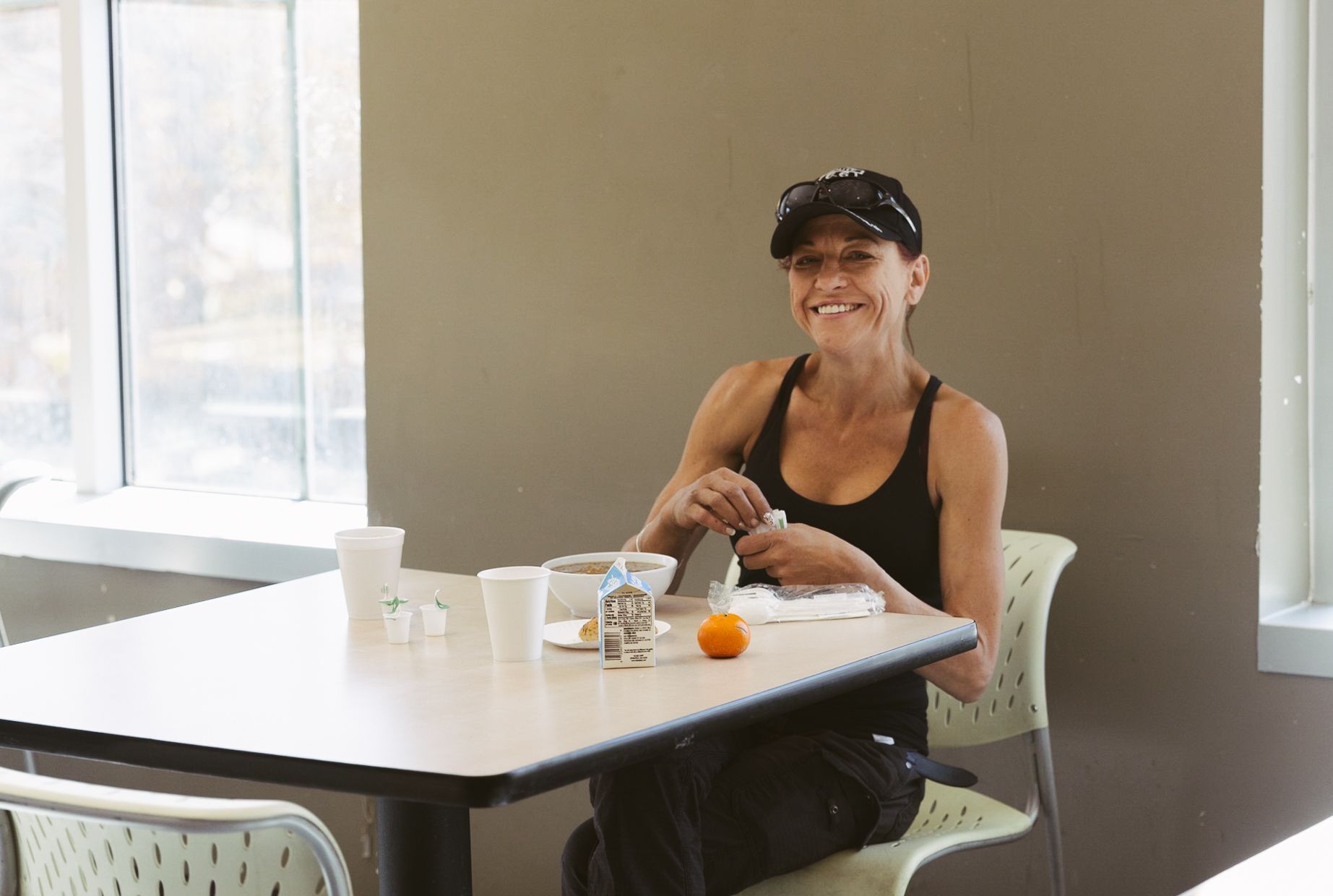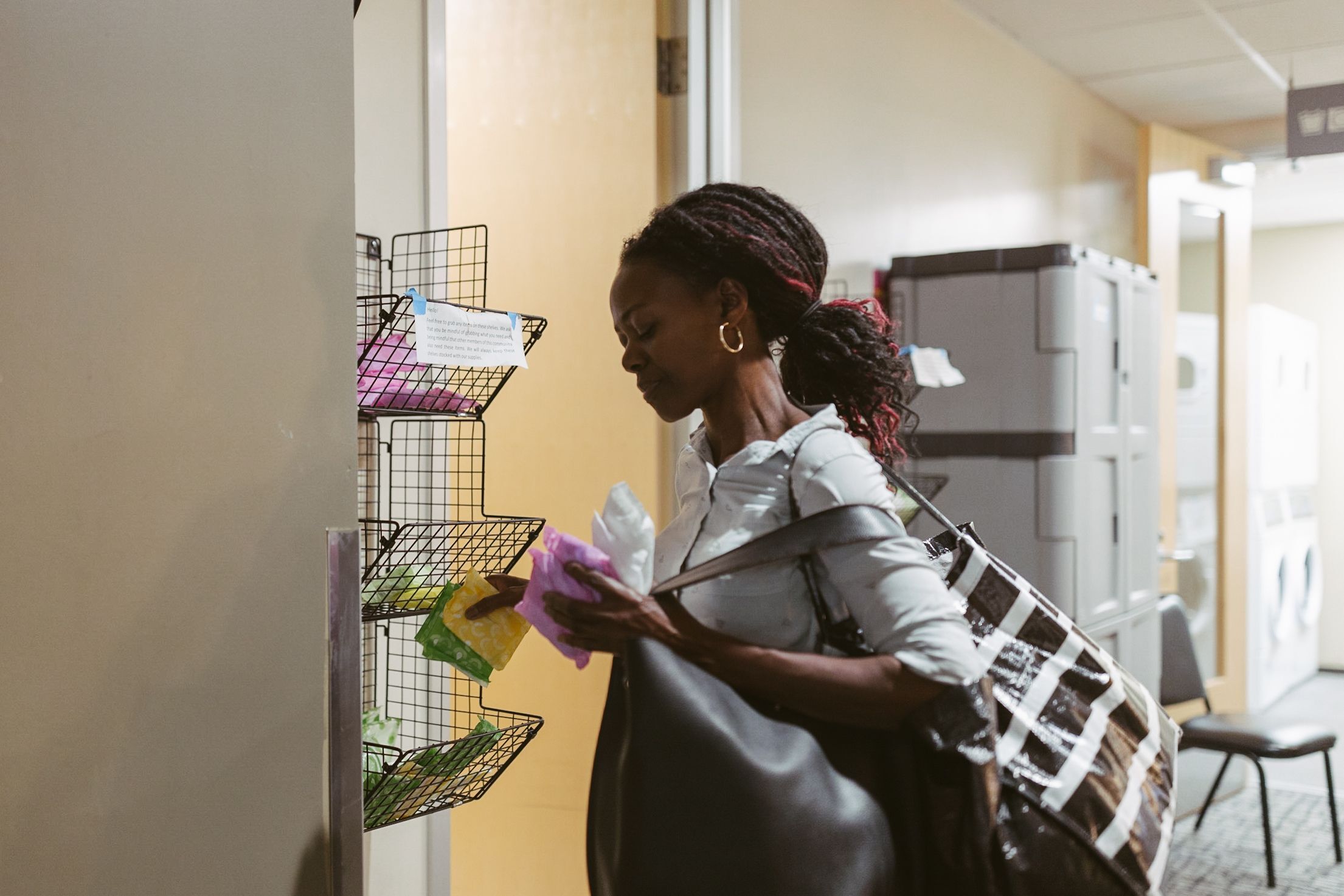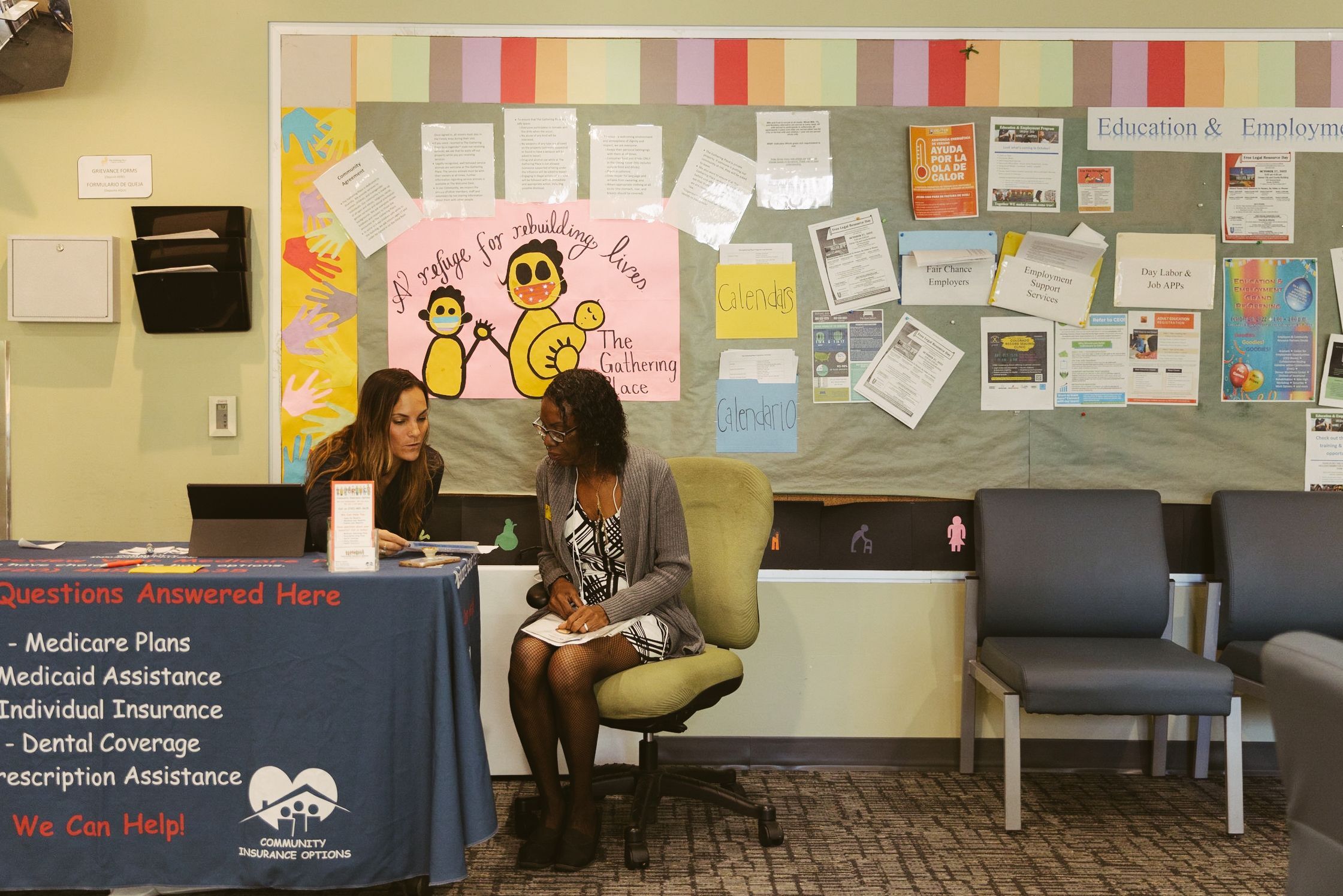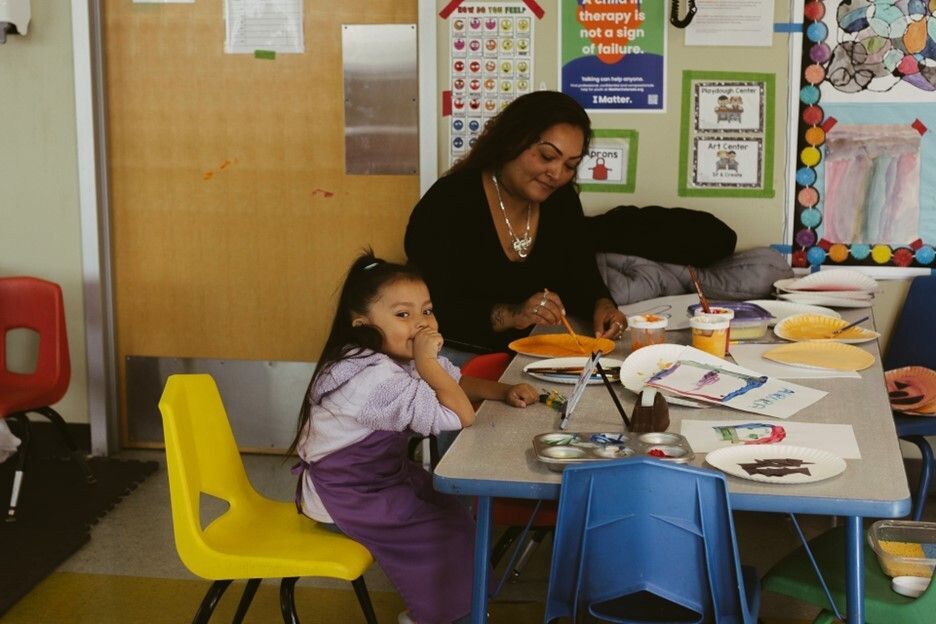History of The Gathering Place
The Gathering Place was founded in 1986 by two University of Denver, School of Social Work graduate students: Toni Schmid and Kathy Carfrae.
While interning at various homeless shelters in Denver, they observed the lack of safe daytime spaces for women and children, who were forced to return to the streets after night shelters closed. Motivated by this gap, they launched The Gathering Place with a $6,000 donation in a small, one-room facility on Santa Fe Drive. Despite its modest beginnings, the space provided warmth, safety, and nutritious meals to women and children experiencing homelessness.
As the need for these services grew, so did TGP. In 1990, we moved to our current location at 1535 High Street. By 2005, daily visits had surged, and the need for more space and resources became urgent. With the support of our community, construction began in 2006 on a new 28,800 square-foot building designed to better serve our members. Completed in 2007, this facility continues to be a critical refuge for those seeking stability and support.
Throughout nearly 40 years of service, The Gathering Place has evolved, expanding our reach and deepening our impact. In response to the growing needs of our community, particularly during the pandemic, we developed culturally responsive programs that create pathways to stability while meeting basic needs. One of our most recent initiatives, Elati Village, opened in 2024 and provides shelter and services for women, transgender, and nonbinary people experiencing unsheltered homelessness.
Today, The Gathering Place remains one of Colorado's most vital organizations serving women, gender-diverse individuals, and their children. We continue to grow, offering trauma-informed care and wrap-around services focused on health, home, purpose, and community. Guided by our core values—empowerment, inclusivity, and hope—we are building a future where everyone has the opportunity to achieve stability and security, regardless of their background or identity.
While continuing to grow and adapt, at the heart of our philosophy and mission are the words of Tina Stein, a previous member and our first employee: “We are here to do with, not for.” This belief continues to guides us each day, as we empower our members to rebuild their lives with dignity, respect, and the support of a compassionate community.






